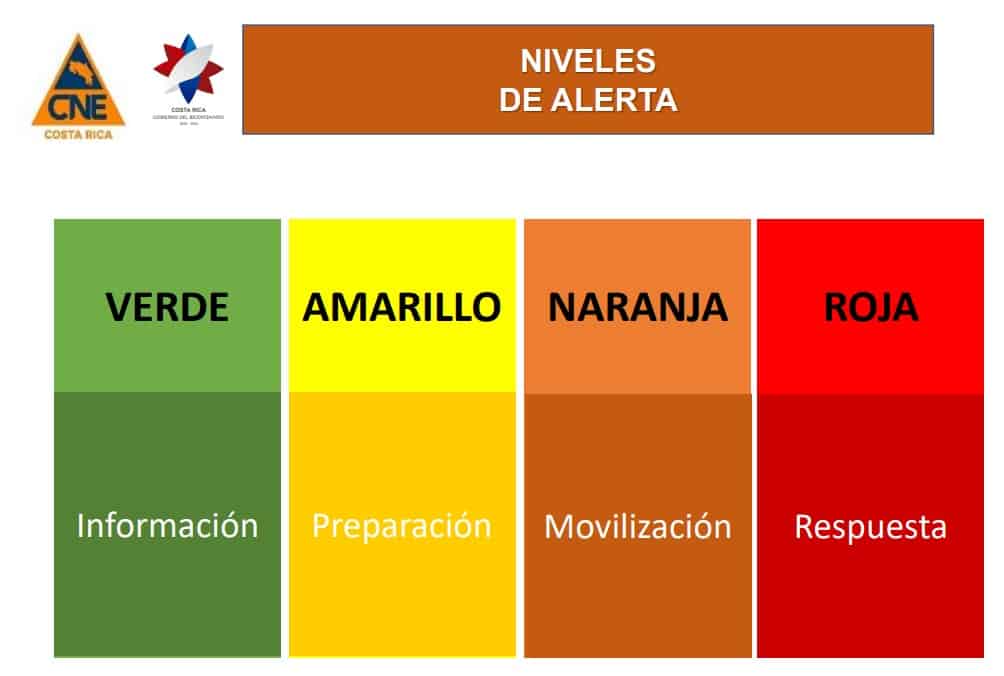The National Emergency Commission (CNE) in Costa Rica frequently issues green and yellow alerts for parts or all of the country.
In fact, right now all of Costa Rica is under a green alert due to heavy rainfall.
And during what Costa Rica’s National Meteorological Institute (IMN) predicts will be an active 2020 hurricane season, it’s more important than ever understand what the color-coded alert levels mean.
Green Alert (alerta verde)
A green alert is meant to be informative.
It is issued when Costa Rican authorities predict a phenomenon that could affect or endanger a community, region or the country. CNE will respond by expanding communications to relevant institutions and the general public, and monitoring the phenomenon.
Yellow alert (alerta amarilla)
A yellow alert encourages preparation.
It is issued when the risk to a community, region or the country has risen, or when it’s confirmed a phenomenon will have a significant affectation on a population.
CNE responds by activating relevant relief protocols and taking pre-established precautionary measures. The organization will also prepare for search, rescue and/or assistance operations in case the situation deteriorates further.
Individuals living in high-risk areas for the threat (for flooding and landslides, most typically) should prepare for a potential evacuation by gathering medications and other essential needs.
Orange alert (alerta naranja)
For the 2020 rainy season, the CNE added an orange alert between yellow and red.
An orange alert represents mobilization. In this stage, which can be declared at a regional level, households or communities will be evacuated to shelters in order to help prevent injury and loss of life.
Regional and national emergency-response bodies will coordinate to ensure individuals who are suspected or confirmed to have coronavirus are appropriately isolated as they evacuate.
Red Alert (alerta roja)
Much more rare, a red alert can only be issued by the Emergency Operations Center, which works in conjunction with the executive branch.
During a red alert, all emergency and humanitarian response teams are activated. This often accompanies a large-scale evacuation of the public to shelters and is followed by an evaluation of damage to infrastructure.
For example, when heavy rains caused flooding and landslides on Costa Rica’s Pacific Coast in 2018, CNE issued red alerts for three districts. More than 1,000 people were evacuated.






